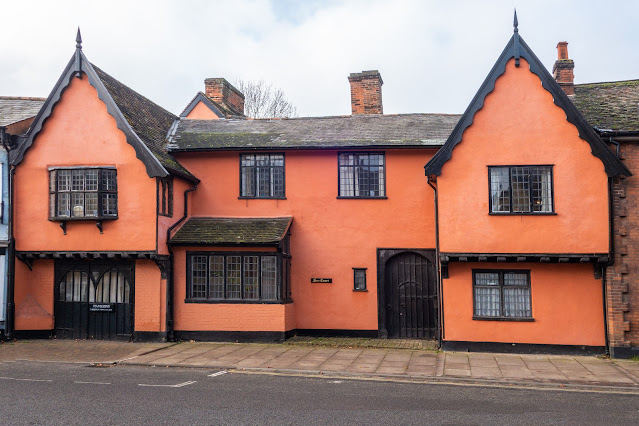Our arrival in Penallt, and a visit Monmouth
Monmouth was an area which we had not explored before, having just passed below it on our way to Pembrokeshire in the past. We had a good journey, despite moderately heavy traffic, stopping at Reading service station on the M4, which looked as it had been invaded by hundreds of pensioners - bus loads of them.!!
Having left the M48, we descended rapidly onto very narrow Welsh roads until, and without too much trouble, we arrived at Annie’s Cottage. It was in a beautiful spot and was really well equipped and spotlessly clean.
Annie's Cottage
The view from the cottage toward Monmouth soon after we arrived.
Sunday was a different story (below) with mist rising from the valley and providing a great backdrop to the Old Church just a few meters from our cottage.
Penallt Old Church as the mist cleared
There are indications of a church on the site in 1254 and an internal batter to the north wall of the nave, that suggest that the present church is a rebuilding of an earlier structure. But most of what survives today is of the late C15 or early C16, with the lower half of the tower probably early C14 and then heightened in the mid C17, probably to accommodate the bells, the earliest of which is dated 1662. The new St Mary's Church had already been built in Pentwyn in 1869 with a resident curate, and this was much closer to the centre of the local population; St Mary's, Penallt then became known as the Old Church.
The remains of a Preaching Cross in the churchyard. In the 6th and 7th centuries, wooden crosses marked the spots where priests or monks preached to the local community. The wooden cross was replaced by a more permanent stone cross, around which services were held. Later still a wooden church might well have been erected, perhaps the forerunner of the existing church?
View from the church door.
On the door centre is a carved heart, symbol of love, containing the initials I H S, the Latin initials for `Jesus Saviour of mankind`. with the date 1539.
An old Parish chest, carved out of a single tree, in which the records and treasures of the community were kept in medieval times.
The octagonal shaped font from the C17, the bowl being carved from a single stone block. One of the industries of Penallt used to be the manufacture of millstones, which were then rolled down the hill and loaded onto barges bound for Bristol.
The original stone altar retrieved from the floor of the porch and now located in the aisle.
A record of the days when people left monies, or as in this case land, for the church and the poor of the parish, usually so that prays would be said for the soul of the departed to speed it through Purgatory!















Comments